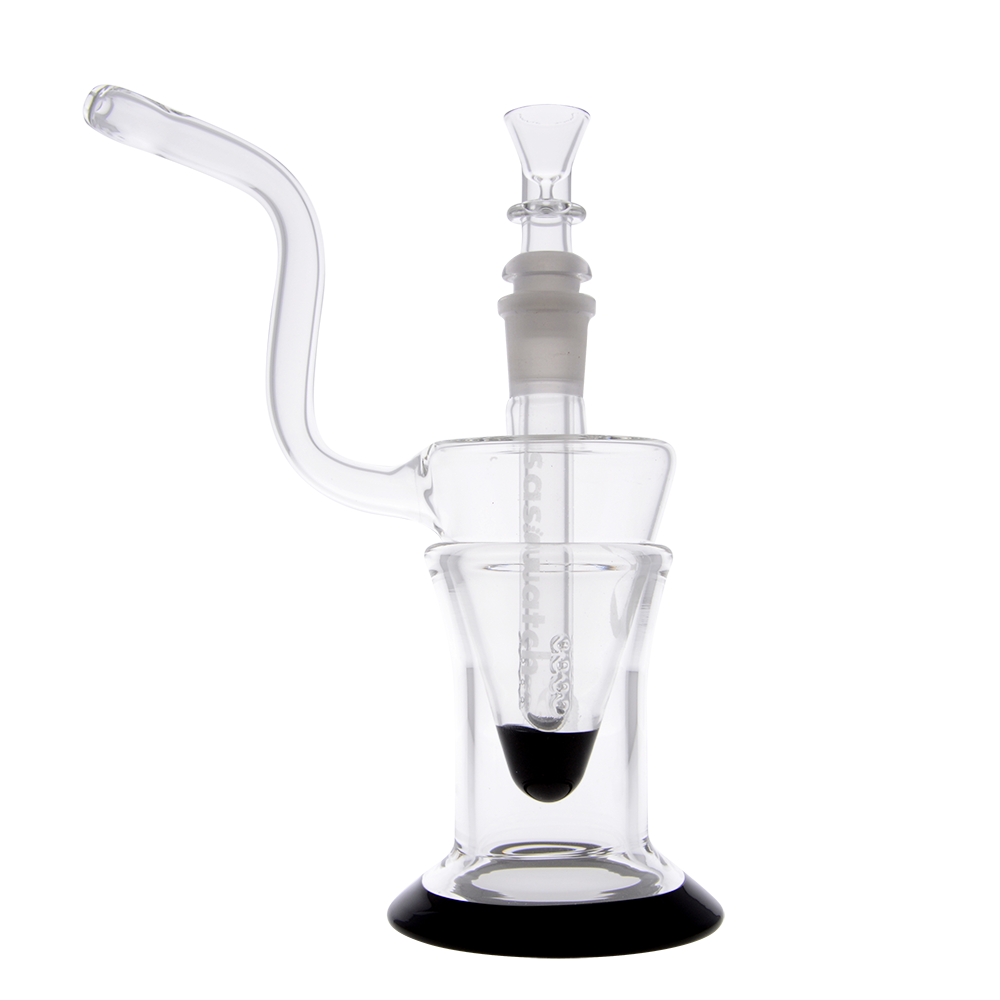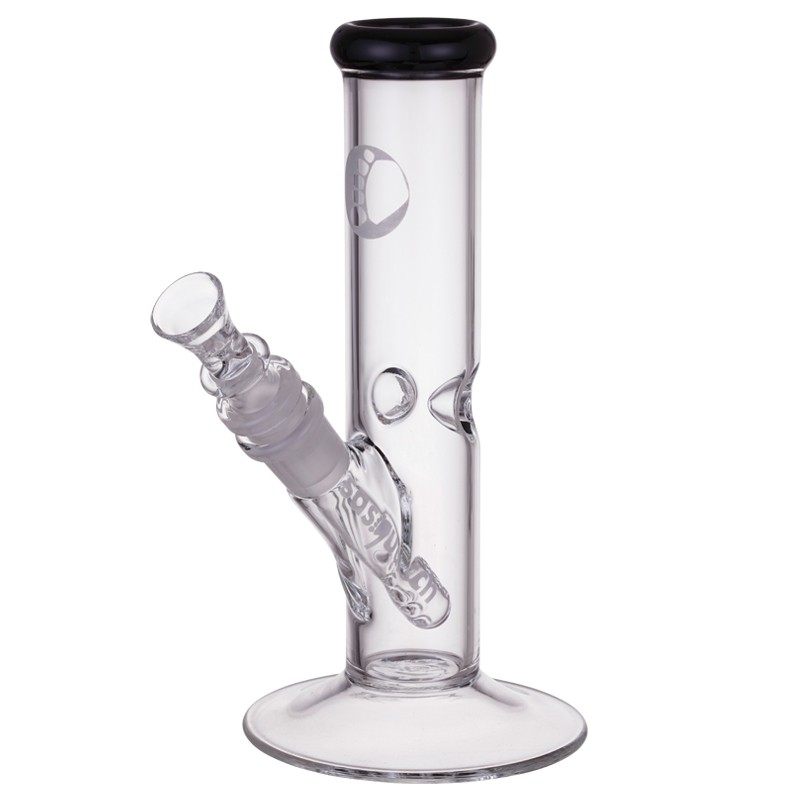
Sasquatch Glass: The First Glass Super Brand?
It’s a legend that lingers from a previous era. It’s a holdover from a time when myth and reality were woven together into tales told under the dancing shadows of campfires to future warriors who lay on their backs counting stars now obscured by city lights. To this day, the Sasquatch has remained a primary thread in the fabric of American mythology. He’s a mighty legend of the Pacific Northwest that continues to tantalize the minds of the region’s more imaginative, the continued claims of which perpetuate the narrative and keep the mythical creature suspended in a purgatorial gray area between fact and fiction. Think Fox News, but more interesting and with slightly better documentation.
Sasquatch Glass owner, Scott Hunter, may not be an eight foot tall Wookie with super-human strength that always turns out blurry in photographs, but he and the company he has built might hold more in common with the mythical ape-man than one would suspect. And though he may not be super-human, the name he is building could arguably be categorized as a super-brand. Hunter is a certified rarity among the throngs of fledgling entrepreneurs of the glass world, a style of businessman many would argue is nonexistent within the confines of the counter cultural trade. Where others see a niche, he sees a potential for transcendence. While others engage in an endless cycle of imitation, he is forging a new trail. And while his peers spend their days building pipes, he is spending his life building a brand.
His secret is simple, really, and it’s not even really a secret; more of an underrated truth. Though it’s important to understand where you’ve come from, the real key to success in any business is knowing where you’re going. For Hunter, that direction can only be up, from the subcultural bubble in which the industry was born into the mainstream where it can thrive. Or, as legendary medical dispensary owner, Steve Deangelo, so famously put it, “Out of the shadows, into the light.”
As Hunter sees it, legalization is now inevitable, an impending reality for the nation that has already come to fruition in the state of Washington where he currently resides. With new legitimacy comes a new market, which according to Hunter, will be the older bracket, age 35 to 60, to be exact. It only makes sense that this would be the case. The myths and stereotypes of the prohibition era have long-since lost their hold on the public consciousness. The so-called “Gen-Exers” are now settling comfortably into middle age, having traded in their flannels and Doc Martins for Polos and sensible-dad tennies. The Reefer Madness generation is fading away. For those of this age bracket that have already been partaking, this means they’re no longer relegated to sneaking tokes from a metal one-hitter behind the shed. For those who have adhered to the archaic laws still in place from a dead era, this means they can finally join their friends without fear of prosecution. This is the market Hunter hopes to capture with Sasquatch Glass.
“It's something that the entire glass industry is completely ill-prepared for,” Hunter says of this emerging bracket. “They're going to be 75% of the pie,” he later adds. “They're going to go from 10% to 75% . . . There's truly nothing that I can think of that I have seen in my research and history where an industry has flip flopped it's demographic that much in such a short period of time. It's massive.”
Hunter has obviously thought long and hard about what it will take to reach his audience. Though his brand is very art-centric, he is adamant that the market will demand more than just another heady glass collection. They want sophistication. Subtlety. Simplicity. But, “the most important thing they're looking for,” Hunter interjects, “is lack of intimidation. I say this to people very simply: if it looks more like it's for meth than for weed, that's not what that market wants. When I go to the shows and look at what's being made, a lot of it looks like it's for hardcore drug use, even though it's not. If you're a 35-year-old parent, that's not what you want. You want something that you can leave out on the coffee table that won't be an issue with your kids around, something that your mother in law won't give you a hard time about. There are still are social issues connected to this.”
So, what exactly constitutes what he’s described? “Look at what I sell on my website. That answers your question. There are a lot of straight lines. . . there are no honeycombs; I don’t do recyclers. I'm using nice, clean, highest quality glass beakers and tubing. It looks like something a BMW owner would use. Again, what I’m trying to do is sell into the types of brands that this consumer uses.”
Really, more than sell into other brands, Hunter is creating a brand that can stand on its own. More than just a glass brand or a brand centered on smoking, however, the name he is creating is meant to encompass the bigger picture of the entire lifestyle; the aesthetic of the modern adult, the enlightened professional, if you will, who appreciates the finer things in life but finds comfort in simplicity. As mentioned before, what he wants to create, and may have already created, is a super-brand.
In order to accomplish this, Hunter wants the Sasquatch paw print that denotes his company’s namesake “to be embedded in your house and involved in all of your activities. When you drink, that paw print is on your glass. When you take a bath, my paw print is on your towel . . . When you eat, my paw print is on the plate. If you have art in your house, you collect the art that we did with Vincent Gordon and Sean Dietrich that are amazing pieces of work. That's what it's about. It's about everywhere you turn, there are Sasquatch-branded products in your house.”
So the far, the model has proven successful. Sasquatch Glass, though only in existence for the last five years, has very quickly rocketed to the forefront of the smoking accessories market as well as the glass art scene in general. But with new growth comes new problems and Hunter isn’t any more hesitant to discuss his trials than he is his triumphs. Through the strides he has taken, Hunter has found himself at the precipice of another level of growth, but it’s one that requires new capital. As the cliché goes, it often takes money to make money.

“Last year, we raised $750,000,” he tells me. “Currently, we're in the process of raising another million dollars so we can expand our production, because right now, we're having growth issues in that department. We're in the manufacturing business. This is a very difficult product to manufacture . . . There are significant barriers to entry. I'm not talking about the individual glassblowers. You've got to have a shop, you have to train people, you've got to have an assembly line mentality. All of my people come from pharmaceutical companies. They're real pharmaceutical glassblowers. Those are the hardest people to find that are that well trained.”
With his existing track record to back him up, Hunter has little doubt he’ll find the capital he needs. It’s just a matter of continuing to etch out his place in the market and finding the right person to help him do it. “At the end of the day,” he speculates, “the type of person who will invest in a company like Sasquatch Glass will be somebody who wants to be involved in this whole cannabis revolution but doesn't want to touch the plant. That's the kind of person we're looking for.”
Sasquatch. A legend of epic proportions, a mythical beast whose notoriety has reached total ubiquity in culture, feared by some, revered by others, treasured by all. It’s only that fitting Hunter would choose such a moniker.

















